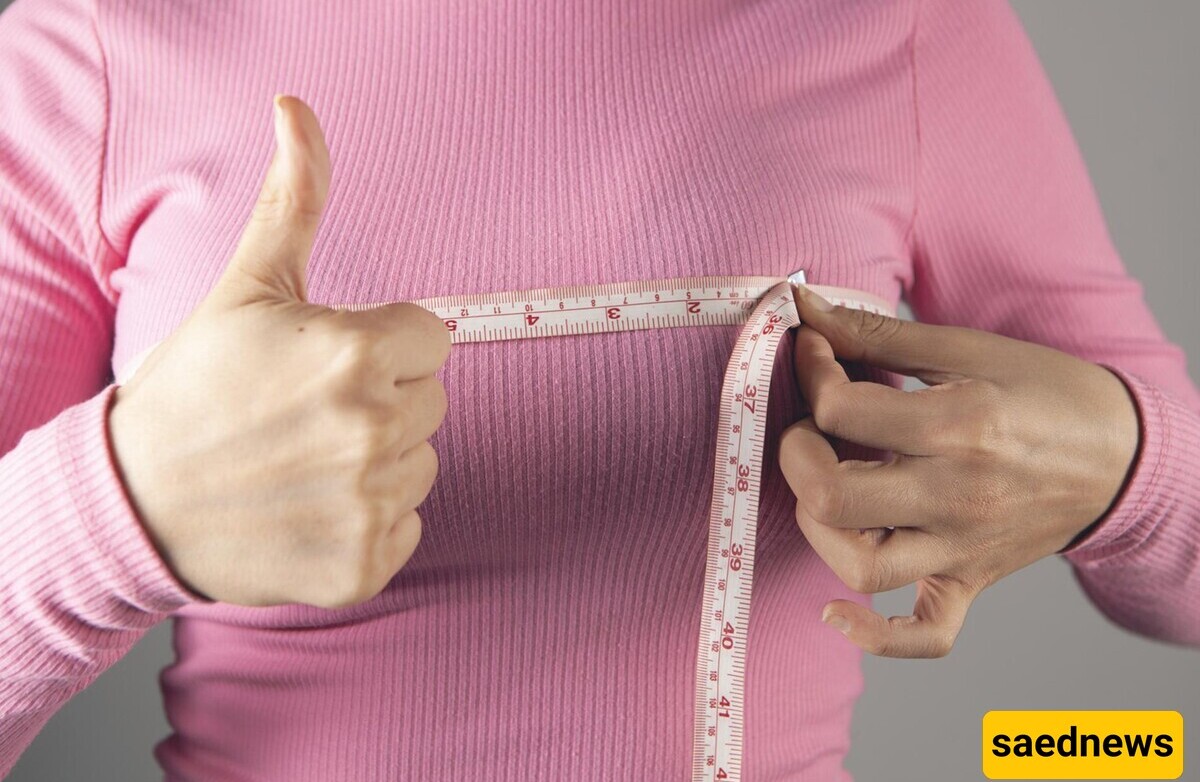SaaedNews: Small breast size in women can have various reasons, including genetics, weight loss, hormonal disorders, or poor nutrition. In this article, while examining the scientific causes, we introduce safe and effective methods for breast enlargement such as exercise, proper nutrition, and medical options.

According to the Sexual and Marital Knowledge Service of SaaedNews News Agency, breast size is an issue that matters to many women and can affect their self-confidence and body image. Small breasts can have various causes, ranging from genetic factors to lifestyle. In this article, based on reliable sources, we examine the reasons for small breast size in women and introduce safe and effective methods to increase breast size. Our goal is to provide scientific and practical information to help you make an informed decision.
Breasts are made up of fatty tissue, mammary glands, and connective tissue, and their size is influenced by multiple factors. Below, we review the most important reasons for small breasts:
Genetics:
Genetics is the most significant factor determining breast size. If most women in your family have small breasts, you have likely inherited this trait. Genes influence the amount of fatty and glandular breast tissue.
Hormonal fluctuations:
Estrogen and progesterone hormones play a key role in breast development, especially during puberty. Deficiency in these hormones due to hormonal disorders, such as hypothyroidism or pituitary dysfunction, can cause breasts to remain small. Also, use of some medications or conditions like Polycystic Ovary Syndrome (PCOS) may disrupt hormonal balance.
Low weight or excessive thinness:
Since much of the breast consists of fatty tissue, individuals with low body fat percentage or excessive thinness may have smaller breasts. Sudden and unhealthy weight loss can also reduce breast volume and cause sagging.
Life stage changes:
Breasts are affected by various life stages such as puberty, menstruation, pregnancy, breastfeeding, and menopause. For example, during menopause, decreased estrogen levels can lead to reduced breast volume.
Unhealthy lifestyle:
Factors such as smoking, excessive alcohol consumption, chronic stress, inadequate sleep, and poor diet can negatively affect overall body health and, consequently, breast size.
There are various methods for breast enlargement ranging from natural approaches to medical procedures. Choosing the right method depends on your body condition, goals, and preferences. Below are reputable and safe options:
Natural methods generally take time and require patience and consistency, but have fewer side effects.
Chest muscle strengthening exercises:
Resistance exercises such as bench press, push-ups, and chest flys can strengthen the pectoral muscles, making breasts appear firmer and more lifted. These exercises do not increase cup size but improve shape and lift. For best results, consult a professional trainer.
Diet rich in protein and healthy fats:
Consuming protein-rich foods like eggs, fish, chicken, nuts, and peanut butter alongside healthy fats (such as avocado, olive oil, and salmon) can support healthy weight gain and improve breast volume. Also, ensuring adequate intake of vitamins, especially vitamin C for collagen production, is essential.
Breast massage:
Regular breast massage with natural oils like olive or almond oil can improve blood circulation and help firmness and shaping. However, scientific evidence on massage directly increasing breast size is limited.
Medical methods usually provide faster results but require specialist consultation and awareness of possible side effects.
Breast implants:
Breast implant surgery is one of the most common methods for increasing breast size. Silicone or saline implants are placed under the breast tissue or chest muscle. This method is effective for those genetically predisposed to small breasts but requires choosing a skilled surgeon and post-operative care. Possible complications include implant displacement or infection.
Fat injection:
Fat is harvested from other body areas (such as abdomen or thighs) and injected into the breasts. This method is more natural than implants but some injected fat may be absorbed by the body, often requiring multiple sessions.
Hyaluronic acid gel injection:
This temporary, non-surgical method adds volume to the breasts. Results last a few months but the procedure is costly.
Herbal pills and creams:
Many advertised pills and creams claiming breast enlargement lack scientific evidence. Some contain hormonal compounds that can cause serious side effects like hormonal imbalances or drug interactions. Always consult a doctor before use.
Suction or vacuum devices:
These devices claim to increase breast size by creating pressure, but there is no scientific proof of their effectiveness and they may damage breast tissue.
Consult a specialist:
Before taking any action, consult a gynecologist, plastic surgeon, or fitness trainer to select a method appropriate for your body and health condition.
Be realistic about expectations:
Natural methods cannot produce dramatic changes, especially if small breasts are due to genetics. In such cases, surgical options might be more suitable.
Consider mental health:
Having small breasts is not a defect. Body acceptance and building self-confidence can be as impactful as physical methods.
Small breast size in women can stem from multiple causes including genetics, low body weight, hormonal disorders, and lifestyle. Natural methods such as exercise, proper diet, and massage can improve breast shape and firmness, but for significant changes, medical procedures like implants or fat injections are more effective. It is crucial to consult a specialist before any treatment and avoid unscientific and risky methods. True beauty lies in self-acceptance and informed choices.

